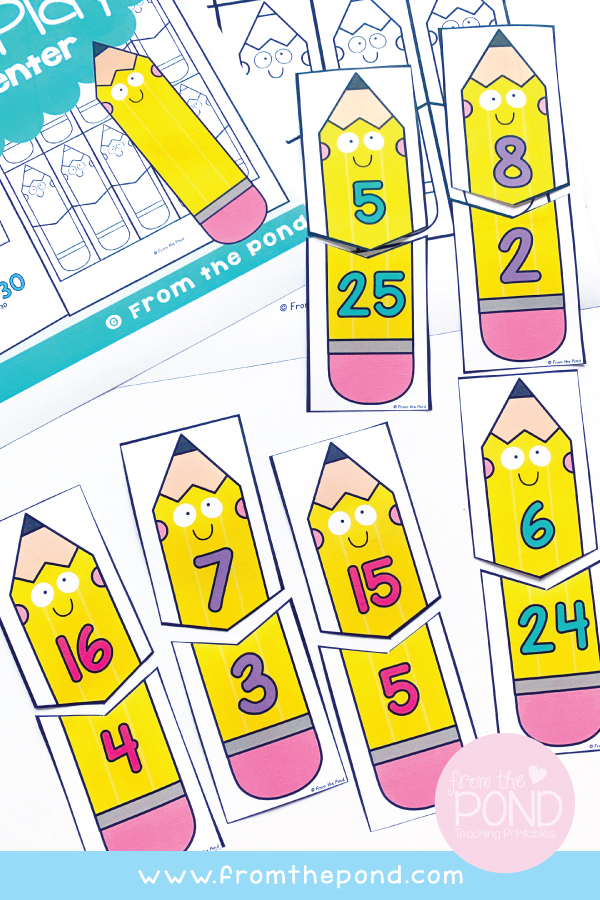Help make these combinations fun by playing matching games. The basic game is matching to make 10, but once mastered you can move on to making 20 and 30. A student who knows 6 and 4 makes 10 can extend their learning to see 16 and 4 makes 20. Perfect as a math center, number game rotation or math workshop! You could also place the cards out for students to play as a 'fast finisher'.
We recommend you print, laminate and snip on the fast-cut lines to prepare it in just minutes.
We recommend you print, laminate and snip on the fast-cut lines to prepare it in just minutes.
How to play
- decide on 10, 20 or 30 totals
- put cards face down
- students flip two and see if they match
Alternatives to play
- leave cards face up for a more relaxed, free-exploration experience
- play in pairs - each student has either pencil tops or bottoms - take turns to reveal a number and then the partner determines the match - place cards together
- advanced play - place any 2 cards together and make an addition problem to represent it - write the answer down with a record of the addition sentence
- a teaching tips page
- a detailed instruction sheet
- 63 puzzle cards (8 to a page)
- a worksheet and
- cover page.
Have fun teaching essential early math skills in your math rotations, groups and workshops with our print and play games!


